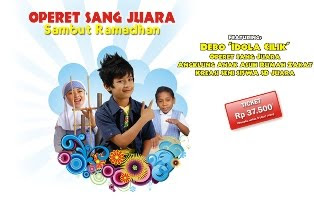My Indonesia
Indonesia, the largest archipelago and the fifth most populous nation in the world, has a total of 17,508 islands, of which about 6,000 are inhabited. Indonesia extends 3,198 miles (5,150km) between the Australian and Asian continental mainland and divides the Pacific and Indian Oceans at the Equator. With a total land area of 767,777 square miles (1,919,443 sq. km), its 190 million inhabitants are made up of 300 ethnic groups who speak an estimated 583 different languages and dialects. There are five main islands in Indonesia. These are: Java, Sumatra, Kalimantan, Sulawesi and Irian Jaya.
Across its many islands, Indonesia consists of distinct ethnic, linguistic, and religious groups. The Javanese are the largest and most politically dominant ethnic group. Indonesia has developed a shared identity defined by a national language, ethnic diversity, religious pluralism within a majority Muslim population, and a history of colonialism and rebellion against it. Indonesia's national motto, "Bhinneka Tunggal Ika" ("Unity in Diversity" literally, "many, yet one"), articulates the diversity that shapes the country. However, sectarian tensions and separatism have led to violent confrontations that have undermined political and economic stability. Despite its large population and densely populated regions, Indonesia has vast areas of wilderness that support the world's second highest level of biodiversity. The country is richly endowed with natural resources, yet poverty is a defining feature of contemporary Indonesia.
Across its many islands, Indonesia consists of distinct ethnic, linguistic, and religious groups. The Javanese are the largest and most politically dominant ethnic group. Indonesia has developed a shared identity defined by a national language, ethnic diversity, religious pluralism within a majority Muslim population, and a history of colonialism and rebellion against it. Indonesia's national motto, "Bhinneka Tunggal Ika" ("Unity in Diversity" literally, "many, yet one"), articulates the diversity that shapes the country. However, sectarian tensions and separatism have led to violent confrontations that have undermined political and economic stability. Despite its large population and densely populated regions, Indonesia has vast areas of wilderness that support the world's second highest level of biodiversity. The country is richly endowed with natural resources, yet poverty is a defining feature of contemporary Indonesia.
Thursday, July 23, 2009
Black Rice Pudding
(Bubur Ketan Hitam)
(Bubur Ketan Hitam)

Ingredients:
* 1¾ cup black glutinous rice
* 2 pandan leaves
* 5 cups of water
* ½ cup palm sugar syrup
* Pinch of salt
* 1½ cups fresh squeezed thick coconut milk
Instructions:
* Rinse rice thoroughly for 2 minutes under running water. Drain well. Put 5 cups of water, rice and pandan leaves into a heavy stockpot. Simmer over medium heat for approximately 40 minutes.
* Add palm sugar syrup and continue to cook until most of the liquid has evaporated. Season with a pinch of salt. Remove from heat, allow to cool. Serve at room temperature, topped with a swirl of fresh squeezed creamy coconut milk.
Helpful hints: As fresh coconut milk turns rancid fairly quickly, a pinch of salt is usually added to the milk to preserve it for a few hours.
Makes 4 servings.
Tips :
You can also mix this bubur ketan hitam with bubur kacang hijau and serve it with bread and hot tea
sources : ??
Labels: Traditional Dessert
0 Comments:
Subscribe to:
Post Comments (Atom)



,+Jakarta.jpg)




Post a Comment